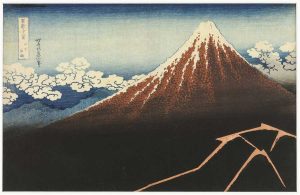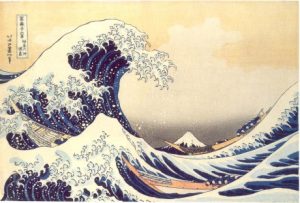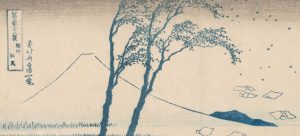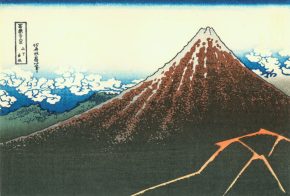This exhibition consisting of 140 works, gives a multi-dimensional view of the the sacred Fuji. Masterpieces by legendary artists Hokusai and Hiroshige will feature prominently in this two part exhibition. Mount Fuji is undoubtedly the most famous scenic element in Japan.
Mount Fuji is located south of Tokyo and is 3776 meters high. The view of Fuji-san changes day by day and is very different in every season.
For centuries this slumbering volcano has been an inspiration to the imagination of writers, poets, painters, artists and photographers. The mountain has been the subject of songs, literature, images and has been scaled and revered, ultimately becoming Japan’s national icon.
Hokusai and Hiroshige play leading roles in this exhibition. Katsushika Hokusai (1760-1949) and Utagawa Hiroshige (1797-1858) each created a series of ‘ 36 views of the Fuji’. Hokusai was the first to portray the mountain in which he exploited the now famous Berlin blue pigment. Man’s struggle with the elements play a central role in Hokusai’s works and 15 of his most spectacular pieces will be on display in part one of the exhibition.
Part two of the exhibition highlights Hiroshige’s famous landscape prints. In 19 of his ‘ 36 views of the Fuji’ we will see the mountain from various perspectives and will take a closer look at his trademark ‘framing’ of his prints. His use of white edges creates the illusion of a framed print combined with this composition gives a sense of depth in this work. Hiroshige’s prints hae a soft almost poetic and clearly reflect the Japanese landscape.

Print by Hokusai

Print by Hokusai

Print by Hiroshige
